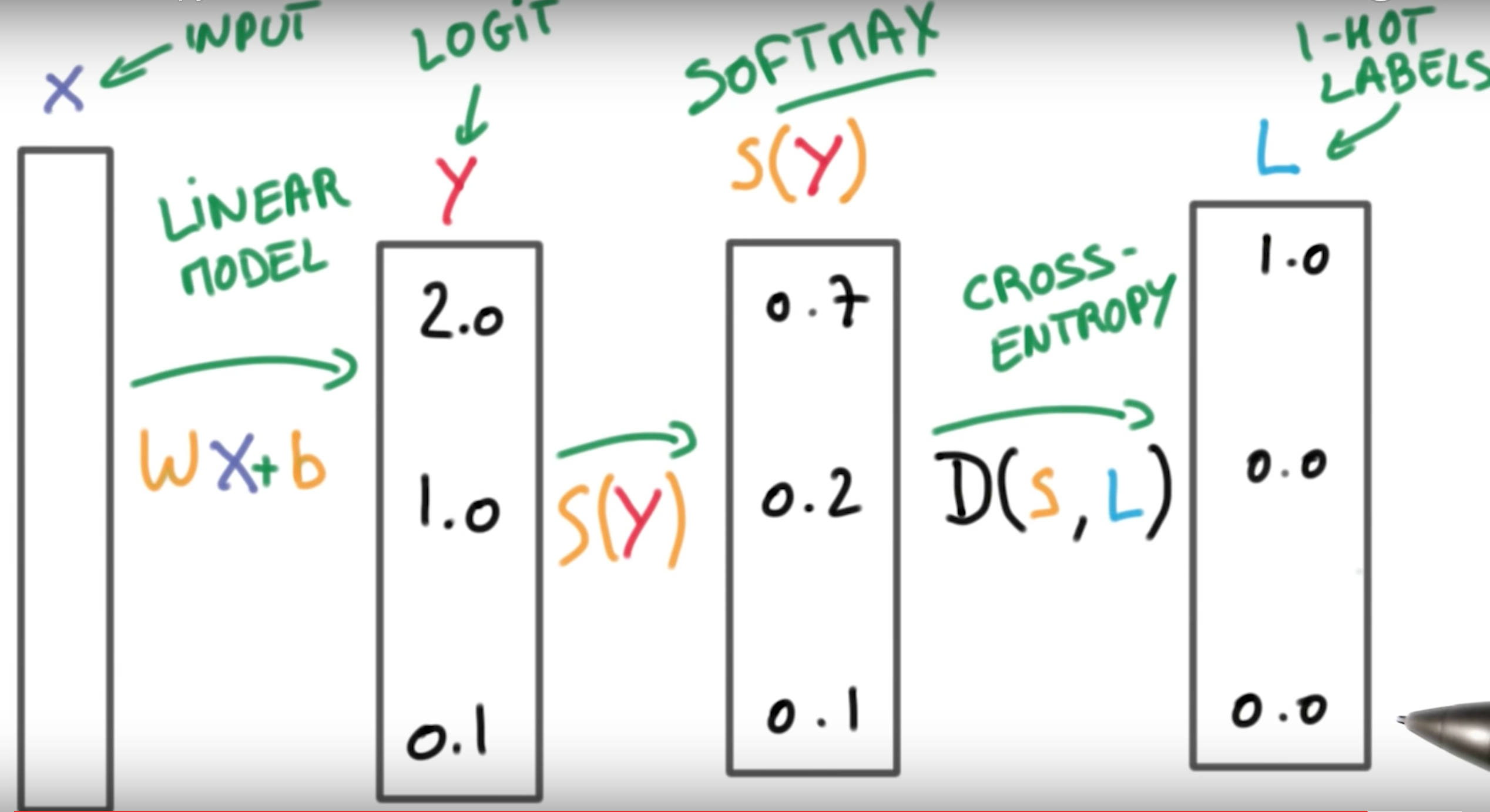Deep Learning Notes 1
2016-03-17 05:17
387 查看
Logistics Classification
Softmax function:We have a linear function:
WX+b=y
where X is the input data and y is the score, our goal is to use machine learning to train the W and b to make the score very high for the correct label. The softmax function takes the scores and turns them into the proper probabilities. The higher probabilities correspond to the higher scores, of course the right label.
s(yi)=eyi∑jeyj
If you multiply the scores by 10, then the probabilities either go very close to 1 or go down very close to 0. Otherwise, if you divide the scores by 10, the probabilities turns out to be very close to each other and look like to be derived from the uniform distribution.
In another word, if you increase the size of your outputs, then the classifier becomes very confident about its predictions, while if you reduce the size of your outputs, your classifier becomes very insure. We want our classifier to be not so sure at the beginning. Overtime, it will gain confidence as it learns.
The codes are from the Udacity:
"""Softmax.""" scores = [3.0, 1.0, 0.2] import numpy as np def softmax(x): """Compute softmax values for each sets of scores in x.""" prob_sum = np.exp(x).sum(axis=0) return np.exp(x)/prob_sum print(softmax(scores)) # Plot softmax curves import matplotlib.pyplot as plt x = np.arange(-2.0, 6.0, 0.1) scores = np.vstack([x, np.ones_like(x), 0.2 * np.ones_like(x)]) plt.plot(x, softmax(scores).T, linewidth=2) plt.show()
Ways to label:
One-hot encoding:
e.g. [a, b, c] -> [1, 0, 0]
Disadvantages When it comes to super large labels sets, say if you have 10,000 labels, then you’ll get large matrix which is super inefficient.
Advantages Easy to compare to our outputs by comparing two vectors.
Ways to compare two vectors:
Cross Entropy:
D(S,L)=−∑Lilog(Si) where S is the output of the softmax function and L is the label
The cross entropy is not symmetric!!
The entire steps: Multinomial Logistics Classification
D(S(WX+b),L)
Input Data X —> Logits Y –> Softmax Scores for each y_i –> Cross-Entropy Results Labels

Minimize cross-entropy:
Training Loss Function is the
Loss Function : loss(W,b)=1N∑iD(S(WXi+b),Li)
Gradient Descent:
Step Chosen
step=−αΔL(w1,w2)
Above step is just calculated from two weights, but a typical Loss function might have thousands of weights.
Disadvantages
Adding small values to super big numbers can result in a lot of errors, e.g:
a = 1000000000 b = 0.000001 for i in range(1000000): a += b print a-1000000000
The result value is not 1.0 though. A good way to solve it is always to make the training variables(data) have zero mean and equal variances.
Weight Initialization
Use small σ to begin with, so that you’ll have an uncertain classifier. As time goes by, the classifier will gain confidence.
Then:
W=W−αΔWL
b=b−αΔbL
Loops .. until we reach the minimum of the loss function.
TO BE CONTINUED. Thank You.
相关文章推荐
- 用Python从零实现贝叶斯分类器的机器学习的教程
- My Machine Learning
- 机器学习---学习首页 3ff0
- CUDA搭建
- 反向传播(Backpropagation)算法的数学原理
- 稀疏自动编码器 (Sparse Autoencoder)
- 白化(Whitening):PCA vs. ZCA
- softmax回归
- 卷积神经网络初探
- 也谈 机器学习到底有没有用 ?
- 如何用70行代码实现深度神经网络算法
- 量子计算机编程原理简介 和 机器学习
- 近200篇机器学习&深度学习资料分享(含各种文档,视频,源码等)
- 已经证实提高机器学习模型准确率的八大方法
- 初识机器学习算法有哪些?
- 机器学习相关的库和工具
- 10个关于人工智能和机器学习的有趣开源项目
- 机器学习实践中应避免的7种常见错误
- 人工智能扫盲漫谈篇 & 2018年1月新课资源推荐
- 人工智能唐宇迪老师专题团购~史无前例最低优惠~
